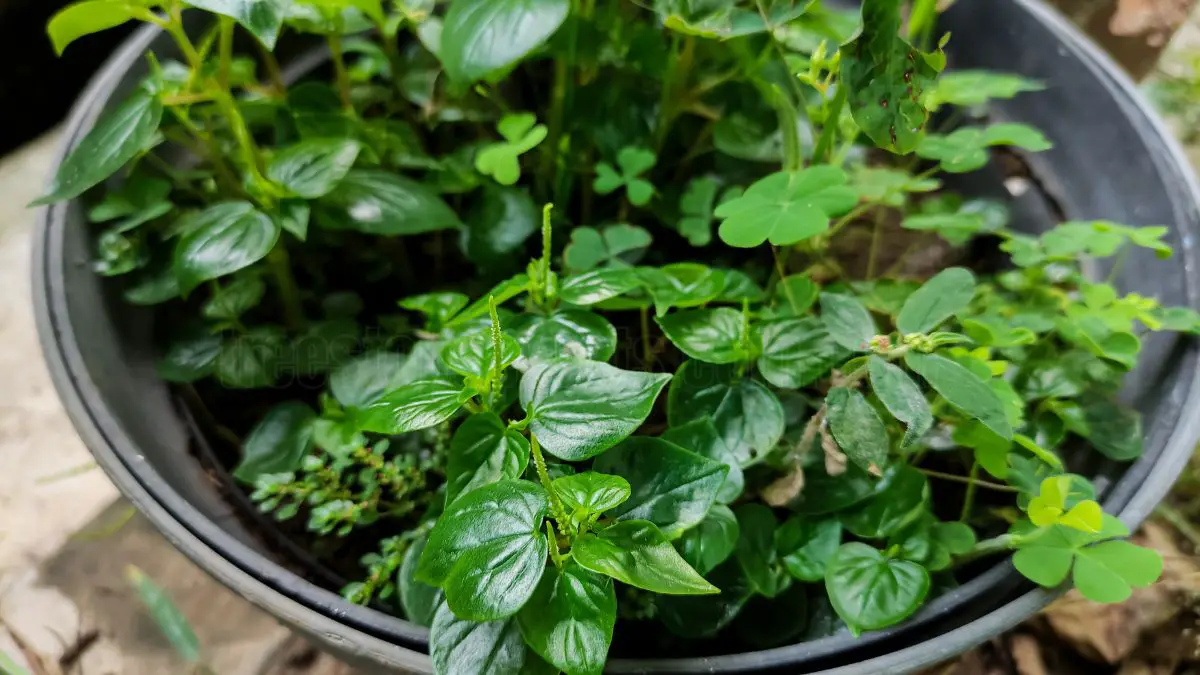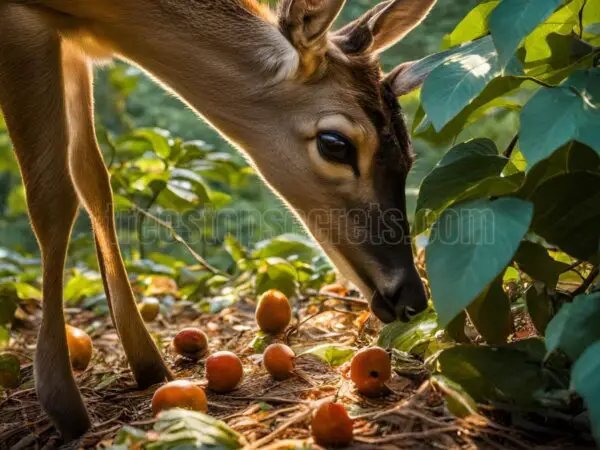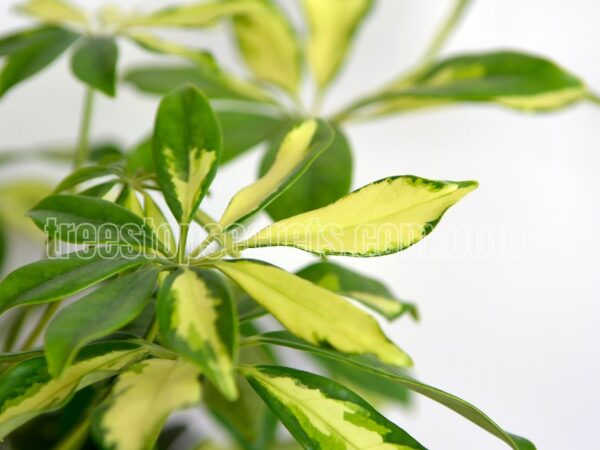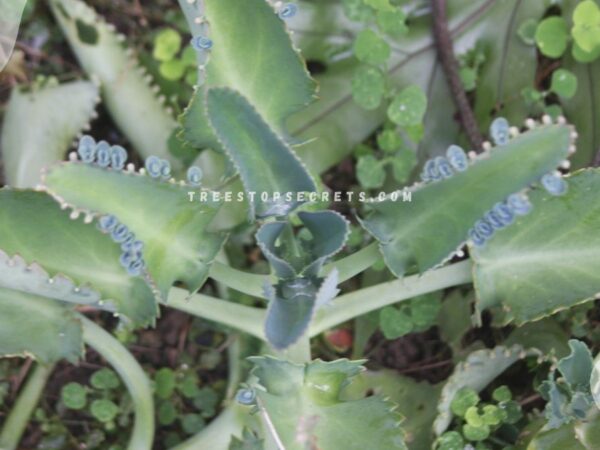Caring for peperomia is simple and fulfilling, which makes it the perfect plant for both beginner and veteran horticulturists. These adorable houseplants do very well in bright, indirect light. They prefer a loose, well-draining soil that mimics their native environments of tropical jungles in Central and South America.
Consistent watering is key, but allowing the soil to dry between waterings is ideal to avoid overwatering. With such interesting leaf shapes and their compact nature, they can fill in and beautify any space. On top of that, they’re super forgiving if you sometimes forget to care for them.
Read on for detailed advice on how to care for your peperomia! Join us to discover what you need to know to keep it thriving in your own home!
Key Takeaways
- Peperomia care With well over 1,000 species to choose from, you’re sure to find one that fits your aesthetic and space.
- The right amount of light is key to keeping your Peperomia thriving and growing. Keep your peperomia by east- or west-facing windows, and modify light exposure based on the season to avoid problems such as leggy growth.
- Water carefully to prevent overwatering and resulting root rot. Make sure to monitor the soil moisture often. When it comes to watering, aim for every 1-2 weeks, allowing the top 2 inches of soil to dry out before watering again.
- When grown in proper mixes that drain easily, strong healthy root systems and plants can thrive. Repotting your peperomia in the growing season will help introduce fresh soil and keep root problems at bay.
- Prevent cold drafts and abrupt humidity changes to encourage healthy growth. To help your peperomia thrive, try using pebble trays or grouping your plants together to create a more humid microclimate, particularly during the drier months.
- Keep a close eye on your plants for signs of trouble including pests and yellowing leaves. Preventing disease early detection and treatment is the best way to keep your peperomia collection healthy.
Understanding Peperomia
Peperomia have become extremely popular houseplants, known for their unique and beautiful leaves, as well as their low upkeep. With more than 1,000 species, these plants show a stunning plethora of forms and hues. It’s this incredible diversity that charms everyone from first-time plant parents to experienced botanists.
Their minimal caretaking requirements make them ideal for novice gardeners, providing all the joy of a successful green thumb without the heavy lifting.
1. What is Peperomia?
Peperomias are members of the Piperaceae family. Their thick, fleshy leaves contribute to water storage which gives Peperomias the ability to thrive in both wet and dry environments.
Native to the tropical regions of Central and South America, they prefer warm and humid environments. Some of them trail gracefully, while others remain bushy. This diversity in growth habits allows them to fit a variety of spaces.
2. Choosing the Right Peperomia Variety
Popular varieties include:
- Watermelon Peperomia
- Baby Rubber Plant
- Peperomia Rosso
When you’re choosing a variety, think about your available space and light levels. Most peperomias like bright, indirect light, but will adjust to low light or fluorescent lighting.
Experimenting with different textures and colors can further brighten your space and create dimension indoors.
3. Essential Supplies for Peperomia Care
To take care of your peperomia, you will need drainage pots, well-draining soil, and balanced fertilizer. Utilize tools such as a moisture meter to help prevent overwatering.
Don’t water again until the top 2-3 cm of soil are dry to the touch. Humidity trays or misters will help make their surroundings more comfortable, particularly in arid environments.
Optimal Light Conditions
Light conditions are one of the most important factors for your peperomia plant’s health and thriving. These delightful houseplants love bright, indirect light, although they’ll survive in lower-light conditions. Not enough light can cause them to grow leggy stems and pale leaves.
Learning about the light preferences of various peperomia types is key to growing long-lived, vigorous plants.
1. Ideal Lighting for Different Peperomia Types
- Baby Rubber Plant: Tolerates low light but will do best in medium to bright, indirect light.
- Variegated Varieties: Require brighter conditions to maintain their vibrant colors.
- Peperomia obtusifolia: Thrives in moderate to bright light, making it a versatile choice.
Bright, indirect light is essential for the healthy growth of your peperomia plant, particularly in winter when you may need to adjust their lighting conditions. Keeping these tropical plants closer to windowsills ensures they receive enough light for vigorous growth.
2. Adjusting Light Exposure Indoors
This is why rotating peperomia plants every few months is important. It helps them get an even light distribution. Installing sheer curtains will help to soften direct sun.
This prevents your plants from getting burnt leaves, particularly if they are located by a south-facing window. Paying attention to how your plant reacts to any changes in light will ensure it is always happy and healthy.
3. Signs of Inadequate Light
Your peperomia might be telling you it needs more light if you see signs of leggy growth or pale leaves. Taking note of the plant’s overall growth habit will help you detect when it is in need of increased light.
Relocating it to a well-lit area may solve their problems.
Watering Guidelines
Watering is one of the most important factors in keeping your peperomia plant healthy. These delightful tropical plants thrive on just the right balance of water. They are extremely intolerant of overwatering, which can lead to root rot. Establishing a regular watering routine that takes into account the surrounding environment will go a long way toward keeping your peperomia happy and healthy.
1. How Often to Water Peperomia?
Several factors influence how often you should water your peperomia plant. Seasonality plays a crucial role, as these tropical plants typically require more water during their active growing season in spring and summer. This period can greatly affect their overall water requirements.
Humidity levels are another important consideration. In drier conditions, your peperomia may need more frequent watering. A reliable method is to monitor your soil's moisture and water your peperomia varieties every week or two, as necessary.
Keep in mind that just because the tag says to water once every 7-10 days, this is just a guideline.
2. Checking Soil Moisture Levels
Instead of pouring a drink for your plant sight unseen, check the moisture level before watering. Either a moisture meter or your finger will do the trick to test the top two inches of soil. If it doesn’t feel moist, then you’ll want to water.
Checking for leaf firmness is another great watering guideline. If leaves are drooping, it could mean your plant needs a drink.
3. Techniques to Prevent Overwatering
By using well-draining soil and pots with drainage holes, you can avoid overwatering. Soil aeration prior to watering will break up compacted soil, improving drainage and letting moisture escape.
Incorporate seasonal changes into your watering routine. Consider adjusting your watering routine with the seasons and the needs specific to your plant. If using a pot with a saucer, water until water starts to pool in the saucer, then let the pot drain for 30-60 minutes.
Soil and Potting Needs
Selecting the best soil and potting products is crucial for your peperomia plant, particularly for varieties like the peperomia frost. A balanced organic mix not only ensures optimal nutrition for your plant but also promotes good drainage and aeration, which are essential for preventing issues like root rot.
1. Best Soil Mixes for Peperomia
When selecting a soil mix, consider the following options:
- Orchid bark
- Peat-based blends
- Succulent mix
A succulent or cactus mix works well, as it improves drainage, which is essential for peperomia’s health. Adding perlite or pumice helps with aeration, giving your roots the oxygen they need to thrive and flourish.
2. Repotting Tips for Healthy Growth
To reduce the stress of repotting, do it during the plant’s growing season. Pick a pot no more than one size up from the current one, large enough to fit the rootball but not so big as to drown the roots.
If root-bound, free up some of the roots by loosening them and make sure to use fresh soil to give them new nutrients.
3. Avoiding Root Rot and Other Issues
Keep an eye out for indicators of root rot like stems that feel mushy to the touch or leaves that turn yellow. These are signs of overwatering or soil that does not drain properly.
To avoid these problems, water correctly and choose the appropriate potting mix. Inspect roots every time you repot so you can identify and address issues before they develop into bigger problems.
Humidity and Temperature Requirements
Peperomia plants thrive in conditions akin to their natural habitats, which typically exhibit high humidity and warm temperatures, essential for producing strong, lush foliage in various peperomia species.
1. Ideal Humidity Levels for Peperomia
Peperomia loves humidity levels from 40% to 60%. To achieve this, consider the following techniques:
- Put a pebble tray filled with water under the pot where the evaporation will help raise humidity.
- An easy solution is to use a humidifier, which will add moisture to the air and keep it consistent.
- Mist the leaves from time to time, particularly in dryer months, to boost humidity.
Average household humidity is hard to achieve—especially in winter. Otherwise, it may cause leaf drop or brown edges on your peperomia’s leaves. Misting is a great way to combat this problem.
Be careful not to overdo it, as excessive humidity will lead to fungal issues.
2. Temperature Fluctuations and Their Impact
The best temperature for a peperomia falls between 65°F and 75°F. Cool temperatures below 60°F will put the plant under stress and you may see slowed growth or even damage.
Severe swings in temperature may lead to leaves wilting or yellowing. Avoid placing your peperomia near drafts or heat sources such as radiators, which can cause unpredictable conditions.
3. Stabilizing the Environment for Peperomia
Being aware of what is going on inside your home is the most important thing. Digital thermometers and hygrometers can help monitor and maintain temperature and humidity levels.
Placing your peperomia with a garden of other plants nurtures a microclimate that locks in humidity. Prevent rapid shifts in humidity and temperature so your Peperomia can acclimate without stress.
Fertilization Practices
Fertilization is an important practice for ensuring that peperomia plants grow strong and healthy. These lovely, low-maintenance houseplants flourish under optimal growing conditions with appropriate fertilization, producing full leaves and a healthy plant.
Once you know how often — and more importantly, what — to fertilize your peperomia with, you’ll see a huge difference in their overall health and vibrancy.
1. Understanding Nutritional Needs
Peperomias are heavy feeders and need high levels of essential nutrients to thrive. Key nutrients include:
- Nitrogen: Essential for leaf growth.
- Phosphorus: Supports root development and flowering.
- Potassium: Aids overall plant health and stress resistance.
Nutrient deficiencies are most visibly seen by leaf discoloration. As an instance, yellowing old leaves can be a sign of nitrogen deficiency, and brown leaf edges can be a symptom of potassium deficiency.
Using well-balanced fertilizers is the best way to avoid these problems and ensure that every nutritional need is met.
2. Best Fertilizers for Peperomia Plants
Liquid fertilizers and slow-release options are both strongly recommended for their convenience. Liquid forms are rapidly absorbed, while slow-release types deliver nutrients over an extended period of time.
Organic options, such as compost or fish emulsion not only provide nutrients but encourage long-term growth and boost soil vitality. Always choose fertilizers that are specially designed for houseplants to provide the right nutrition to your peperomia.
3. Timing and Dosage for Optimal Growth
During the active growing season, which is usually from spring to summer, applying a fertilizer every few weeks helps promote strong growth.
As winter nears and grass stops growing, cut back on how often you fertilize. It’s extremely important to follow package instructions when determining dosage, as over-fertilization can be extremely damaging to your plant.
Common Problems and Solutions
Peperomia plants, belonging to the large genus of the family Piperaceae, are easy to care for but can encounter issues affecting their vibrant foliage. Recognizing these problems and producing successful remedies are essential for maintaining their well-being.
1. Identifying Common Pests in Peperomia
Common pests that affect peperomia include:
- Mealybugs
- Aphids
- Spider mites
- Fungus gnats
Symptoms of these infestations usually present themselves as a gooey, sticky film coating leaves or the appearance of little bugs grouping up along stems and leaf axils. Consistent inspection can mitigate these common annoyances.
Using preventative sprays, like neem oil, will help prevent pests from becoming an issue.
2. Diagnosing Leaf Issues and Discoloration
Common leaf issues like yellowing or curling can indicate more serious problems. Yellowing can be a sign of overwatering, while curling can be a sign of underwatering or even pest damage. Identifying which of these is the culprit is key.
As an example, look underneath leaves regularly for pests or disease or stress. Changing care practices—from watering plants more moderately to increasing airflow—makes a huge difference in overall plant health.
3. Effective Treatments for Common Problems
For pest control, insecticidal soap or neem oil can help you keep infestations at bay without the use of harsh chemicals. It’s important to change watering habits to avoid root rot, which is often fatal.
For injury on mature leaves, regularly prune any yellow or brown leaves to improve the overall plant appearance. This practice improves public health by focusing development energy on healthier patterns of growth.
Propagation Techniques
Propagation is a fun way to increase your peperomia collection. So now you can delight in more of these pretty plants without shelling out cash on fresh new acquisitions! The process is simple and rewarding. It’s so easy, even beginner gardeners can do it successfully with leaf and stem cuttings.
Being willing to try unconventional propagation methods will surprise you with how often you succeed, making your plant parenting experience that much more fun.
1. Leaf Cuttings for New Plants
- Choose the best quality leaves from the parent plant, picking ones with no marks or bruises if possible.
- With clean, sharp scissors or a knife, cut the leaf off close to the plant’s stem.
- Give the cut leaf some time to dry out (a couple of hours) so that a callus can form.
- Put the cutting in a pot with well-draining potting mix, covering the cut end a little.
- Water thoroughly, keeping the growing medium consistently moist but not saturated.
Keeping tools clean is very important to avoid infection that can stunt or kill growth. Providing the right medium—such as a blend of perlite and potting soil—promotes strong root growth.
2. Stem Cuttings for Bushier Growth
To create bushier plants, choose stem cuttings that have several nodes.
- Cut just below a node to encourage growth.
- Remove the lower leaves to expose the node.
- Submerge the node in water or potting mix depending on your propagation method.
It’s important to provide warm, humid conditions to encourage rooting and monitor for signs of new growth. Keeping an eye on moisture levels is very important.
Avoiding either overly dry or moist conditions is essential for optimum growth.
3. Tailoring Methods to Specific Varieties
Each individual peperomia plant, a member of the large genus Piperaceae, will have different propagation requirements. For each type, researching peperomia care essentials can significantly increase the likelihood of success.
- For example, variegated varieties tend not to propagate as easily and may need a higher light level to root.
- Experimenting with both types of cuttings will bring you varied experiences, enhancing both your education and enjoyment.
Pruning and Maintenance
Peperomia plants don’t grow very quickly, making regular pruning an easy yet vital practice for maintaining your indoor plants' shape and health. This essential care routine promotes bushier growth and helps remove any dead or diseased leaves. By developing a habit of monitoring your peperomia's health, you will help your plant thrive and continue to provide vibrant foliage for many years.
1. When to Prune Your Peperomia
Know what to look for to know when it’s time to prune. These signs of distress might include leggy growth, yellowing or dying leaves, and an overall scraggly look.
The ideal time to prune is during the active growing period, which is generally spring and early summer. Take note of the seasons. Knowing this will allow you to time your pruning sessions properly and have your plant prepared to recover.
2. Techniques for Healthy Growth
To get the cleanest cut possible, which will reduce damage to the plant, use sharp scissors to prune. Prune intentionally by cutting back spindly stems and dead leaves to encourage uniformity and improved air circulation.
Monitor plant health consistently. This will give you an idea of when and how much to prune, keeping your peperomia looking bushy and healthy.
3. Regular Maintenance Practices
Be proactive with regular maintenance such as monitoring soil moisture levels and vacuuming or sweeping leaves to avoid accumulation of dust particles.
Monitor your plant as a rule of thumb, looking for pests and diseases and dealing with any damage right away. Developing a regular maintenance routine, maybe visiting once a week, will help your peperomia stay happy and colorful.
Conclusion
With these tips in mind, taking care of your peperomia will be enjoyable and easy! These plants like the perfect amount of moisture and bright, indirect light. Monitor the soil, allowing it to dry out between waterings. Keep an eye on humidity and temperature since this is one of the aspects that most affects their health. Fertilize sparingly and be vigilant for pests. Routine pinching can help your plant stay full and healthy. With these tips in mind, you will provide a great abode for your peperomia. Soak up the beauty and joy that these wonderful plants will bring to your home and garden. Begin your adventures with peperomia today and watch your green thumb grow!
Frequently Asked Questions
What is Peperomia?
Peperomia is a unique houseplant from the large genus Piperaceae that’s been growing in popularity thanks to its vibrant foliage and easy-going nature. This easy plant to grow indoors features fascinating, colorful, fleshy leaves in various shapes and hues, making it a beautiful, versatile addition to home decor.
How much light does Peperomia need?
Peperomia plants thrive in bright, indirect light, making them ideal indoor plants. Protecting them from harsh midday sun is crucial, as it can cause the vibrant foliage to burn, especially on the peperomia leaves.
How often should I water my Peperomia?
Water your peperomia plant when the first inch of soil is dry to the touch, typically about once every 1 to 2 weeks, depending on the humidity and temperature for optimal peperomia care essentials.
What type of soil is best for Peperomia?
This is why a loose, well-draining soil mix is essential for indoor plants like the peperomia plant. You can use a cactus potting mix or add perlite to standard potting soil to enhance drainage.
Does Peperomia need high humidity?
Peperomia, a popular houseplant, thrives in moderate humidity, typically around 40%, suitable for most homes. In extremely dry environments, occasional misting of the vibrant foliage can benefit your new peperomia.
How often should I fertilize my Peperomia?
How often should I fertilize my Peperomia plants indoors? Fertilize every 4 to 6 weeks in spring and summer with a balanced liquid peperomia fertilizer, cutting down during winter months.
What are common problems with Peperomia?
The most frequent problems with the peperomia plant include yellowing leaves from overwatering or leaves dropping due to underwatering; proper peperomia care essentials can help prevent these issues.
Image Source: Paid image from CANVA





